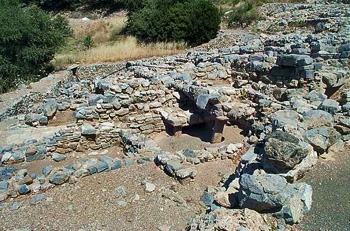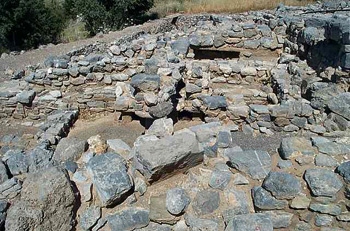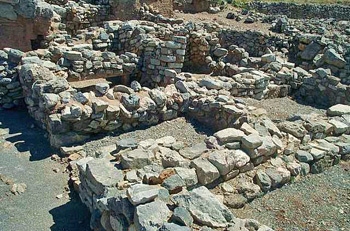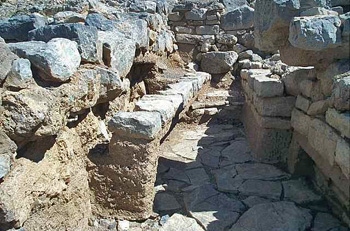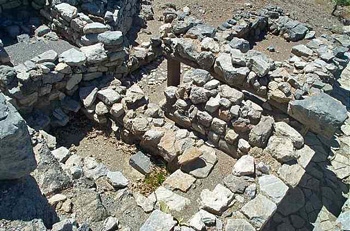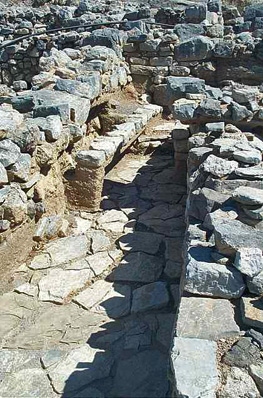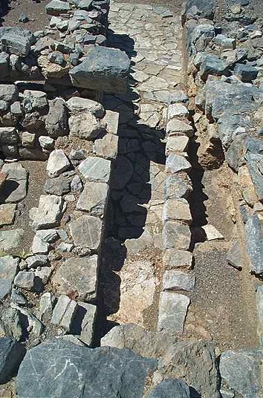This sanctuary complex is situated on the southern side of Mount Dikte, 1,200 metres above sea level, just above the village of Kato Simi or Symi, with fantastic views down to the south coast. A spring emerges from the rocks immediately to the east of the site. The site has been excavated over the last 30 years by A. Lebessi.
Unusually for Crete this sanctuary remained in constant use from the Minoan Protopalatial period up to Roman times. There is some evidence of activity here from MM II, but the first of the remaining structures dates from MM III. This was rebuilt and added to in later generations. A Neopalatial sanctuary has been uncovered. Interestingly it is located on the side of a mountain rather than on the top like the Peak Sanctuaries and this has given rise to speculation that it was used for different religious rituals than the Peak Sanctuaries themselves.
The Neopalatial Sanctuary was surrounded by a wall or temenos, rectangular in shape. A paved road round the outside of the wall led to the entrance of the Sanctuary and was possibly used for processions on days of religious ritual. It has been suggested that a rectangular structure inside the walled area was a tripartite shrine, similar to the one seen on the Peak Sanctuary rhyton from Zakros.
A rubbish dump located inside the wall contained the remains of animal bones, cups and pots. This evidence suggests that some form of communal eating took place at the time of the religious rituals.
Cult finds from this area included libation tables, some with Linear A inscriptions, cult vessels and symbols denoting the double axe and horns of consecration. Preziosi and Hitchcock, in their book Aegean Art and Architecture, argue that the presence of a number of bronze figurines, of which male figurines outnumber female figurines by a ratio of two to one, suggests that the sanctuary was used for making offerings primarily by male members of the Minoan elite.
After the complex was destroyed, most likely by an earthquake, a new building, S, was constructed in the south west corner of the site during the second Neopalatial period. LM IB remains were found in this building but it remained in use right through to LM IIIC.


